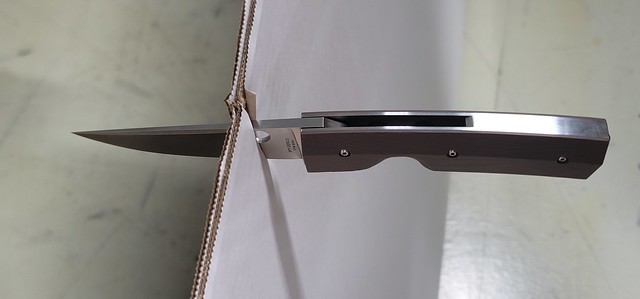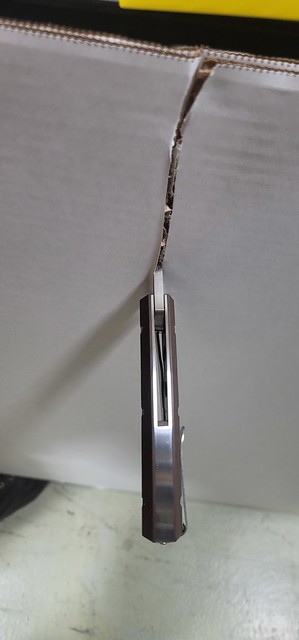Exhibit A.



It did fully make the cut but the end result wasn't pretty.

What you're seeing there is not actually a jagged cut, but the result of the blade spine wedging like a door stop and rippling the board as I forced it through the cut.
Now... before y'all start yelling at me, I am well aware that this is the worst way to cut a box, and I know that if you just angle the blade 45 degrees to the board it will cut significantly easier (and if you didn't know that, try it for yourself). But, let's just say you needed to make a nice square cut for your kid's science project poster board or something so you had to cut the board right at 90 degrees.
I also know that if I had use the tip, the cut would be much easier, and that proves the point I'm trying to illustrate because distal taper makes the blade much thinner towards the tip and that's why it cuts easier.
For reference this was one of the later Nilakka's that did come with a tiny little bevel, and I've sharpened it at 30 inclusive. The edge also got the crap dinged out of it when I finished the cut and banged the edge against the floor which is epoxy coated....which is why I really feel that S30V was not the best steel for this knife but I suppose technically that would have happened to any 30 inclusive edge on S30V.
I can only imagine what this knife would do with 1.5-2mm blade stock. I believe these were 4.5mm thick. I love this knife but even with being almost a zero grind, it doesn't slice like my 3mm regrind Manix 2 does. Sure, for softer materials and even rigid ones that are shorter in height, the Nilakka may show an advantage but the thickness does ramp up quickly around the center of the blade. I could measure later but I'm fairly certain that my Manix is significantly thinner at the same height from the edge than the Nilakka is.
Now imagine how all this compares to a common utility knife blade with how thin those are. This whole topic is basically about forcing a wedge shape through a material and at some point the sharpness of the leading edge can only do so much to make that action easier.
Anyway just something fun I thought we could chat about. I'm really curious about the HP Delica and how that blade is going to be ground. I will always love my Shaman and big beefy knives but the other end of the spectrum is sure a lot of fun to play with.